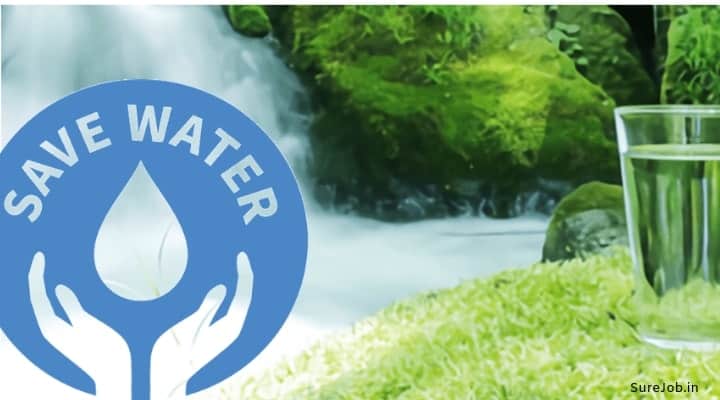Most households in India receive 20,000 litres of free water every month. On average, an Indian household consisting of four persons including two children consumes between 600 and 800 litres of water daily.
Consumption is higher in larger families as well as households that have bathtubs and one or more vehicles. Utilities providers charge an additional fee of Rs.10 for every 1,000 litres.
This means, an average family would pay Rs.40 to Rs.60 per month for this precious resource while larger households can pay whopping Rs.100 to Rs.150 for water, depending upon number of people, usage and other parameters.
What This Means?
Above figures imply, a majority of Indian households that depend upon water supplies from utilities providers including municipalities, Water Resources Departments of state governments and other authorities, receive fairly ample water free for monthly use.
However, they end up paying bills- however small the amount- due to extra water they need to buy from utilities providers. Answers for using more water can be found in consumption patterns of Indians.
Water Consumption Patterns in India
Generally, an adult consumes between 100 litres and 150 litres of water per day, depending upon the location. Obviously, water usage would be higher in hot, humid areas and lesser in places with relatively drier and cooler climate.
Here is how an average Indian consumes water daily:
- Drinking Water: Five to six liters/ day
- Cooking: Five to six liters/day
- Washing utensils & clothes: 20 to 30 liters/ day
- Domestic cleaning: 10 to 15 liters/ day
- Flushing toilets: 30 to 40 liters/ day
- Bathing: 30 to 50 liters/ day depending upon method such as shower, bucket and bathtub.
While nobody denies importance of personal and domestic hygiene, there are several ways you can conserve water.
If you save water, you are saving money and preventing misuse of this natural resource. Here are some ways and means to save water.
10 Simple Ways to Save Water

1. Check & Repair Leaky Plumbing
Faulty or old plumbing is the prime culprit for water wastage. This includes leaky pipes, taps that drip water despite being turned off, faulty flush tanks in toilets that continually drain clean water, leaking overhead tanks installed on terraces and roofs of dwelling units.
If you have leaky plumbing anywhere at home or office, get it fixed right away. You will conserve water as well as environment and possibly some precious money.
2. Shaving
Majority of Indian men shave at home. This is because a shave at barber’s shop can cost anything between Rs.20 and Rs.100, depending upon where you go.
Shaving at home is convenient: you can do it at will, spend lesser and dispense with the need to wait in queues at saloons. However, a common mistake most men commit is to leave washbasin tap open while shaving.
You do not need running water all the time to wash the razor. Hence, turn off the tap when not needed. If possible, use a tumbler of water to rinse the razor since it saves a lot of water.
If you are not comfortable with using the same water in a tumbler to wash the razor, discard it and refill afresh. You can save water by using half a tumbler of water instead of filling to the brim.
3. Shower
Colossal volumes of water are wasted when we shower. This occurs because we do not turn off the shower while soaping or shampooing.
The shower continues to run ceaselessly, wasting precious clean water that could be put to better use. You can prevent this wanton wastage by turning off the shower before applying soap or shampoo.
If you are using a water heater, turning off the shower also helps save electricity: warm water will run down the drain. Instead, it will remain in the heater or geyser. Doing so also saves money since water heaters guzzle electricity.
Turning off the shower during soaping and shampooing has another small benefit: it prevents you from accidentally skidding on wet, slippery surface and getting injured.
Once you have finished showering, ensure taps are turned off. If you are using a hot-and-cold water mixer, turn the lever to tap side and turn both knobs fully to off position to save water.
4. Washing Clothes
Believe it or not- semi-automatic machines consume lot more water than automatic ones. This is because you have to turn water supply on or off while using a semi-automatic washing machine. Such washers have a threshold up to which you can fill the washing tub.
Left unattended, the washing tub will overflow causing water to drain unnecessarily. If you are compelled to use a semi-automatic washer, ensure you keep watch over water filling in the washing tub. Turn off the water supply as soon as it has reached the desired level.
Automatic washing machines allow you to select how much water is needed, based on the load. Hence, you can choose for full, half or low. Water supply to such washers turns off automatically and you need not worry about wastage.
To conserve water, use automatic washing machines. They cost a little more. But they save your money by consuming relatively lower volumes of water and save considerable effort.
When using a washing machine of either type, collect the water that drains after rinsing. This water can be utilized to flush toilets. Since they contain detergent, your toilets remain clean and sparking. It can also be used to clean vehicles before washing them with fresh water.
Nowadays, certain brands of eco-friendly detergents containing herbal extracts are also available in the market. Use such detergents, if you have a garden. Being eco-friendly and made of herbal extracts, they can be safely used for gardening purposes.
5. Washing Utensils
Leaving the tap running while scrubbing vessels is yet another practice at most households. There is no need for water while you are busy cleaning vessels of grease and food stains. You can conserve large quantities of water while washing utensils by simply turning off the tap while scrubbing.
Another great idea to save water while washing utensils is by using two buckets full of water. Once you have finished scrubbing, dip the vessel in one bucket to remove dishwashing soap. Later, rinse in the other bucket to remove any vestiges of dishwashing soap.
Since Indian households usually wash a plate, cup or other vessel before using, such type of cleaning is acceptable. It helps save water that would otherwise be wasted. You can use water from these two buckets to flush toilets.
6. Flushing Toilets
Toilets have to be clean and sparkling. If not, they can cause disease to members of a family or residents of a household.
I have already mentioned how you can utilize water drained from washing machines or left over after cleaning utensils to flush toilets. However, there is one more efficient way to save water while flushing toilets.
On average, a toilet flush tank drains five to six litres of water per single use. This means, a family of four uses around 30 litres of water for flushing and personal hygiene after using a toilet.
Nowadays, you can buy economically priced tanks that have the ‘half flush’ and ‘full flush’ facility. This means, you can use only that quantity of water required for the purpose by using ‘half flush or full flush’ features.
As I mention earlier, check whether your toilet flush is draining water while not in use. This is particularly important for households that use concealed flushes. You can know when a flush tank is draining water by the time it takes to fill up.
A leaky tank will take a few minutes longer to fill. If your flush tank is draining water continually, have it fixed immediately. Leaky flush tanks can send your water bills soaring.
7. Cooking
Indian households waste a lot of water while cooking. People wash vegetables and grains using large volumes of water than necessary. Instead of washing vegetables, fruits and grains under running water, collect some water in a vessel and gently stir with hands.
This will help remove any dust, vestiges of pesticides and fertilizers as well as unseen worms in grains while helping save water. Rather than discarding this water, store it for flushing toilets.
It can be effectively utilized for watering a garden or kitchen garden. Washing vegetables, fruits and grains in water collected in a vessel has the same effect has holding under running tap.
Further, it helps you to know whether the foodstuff has been cleaned from colour of the water that remains after rinsing. This is not possible when you use running water.
8. Drinking Water
Yes, it is possible to save drinking water too. Instead of emptying out water bottles and flasks with stale water into a basin, collect it in buckets that are used in toilets for flushing or washing clothes. Understandably, volumes will be very small.
Here, remember the old adage- every drop forms an ocean. Hence, every millilitre of water you save, counts towards your effort of saving this precious natural resource.
9. Gardening
Should you have a garden, it would definitely be a matter of pride. It will have beautiful plants and shrubs and possibly a small lawn. Gardening consumes a lot of water.
After all, plants need water for their growth and to survive harsh daytime heat. Most people use sprinklers or spray water using a pipe. This tends to waste a lot of water.
Instead, use a good watering can. This can be filled with ease whenever needed. They are easy to carry. Nowadays, you can buy very aesthetically designed watering cans that add to beauty of your garden, even when left in midst of plants and trees.
Using a can allows you to select the areas for watering and use appropriate volumes. You can also save water by using the one left from washing foodstuff or emptied from drinking bottles.
10. Washing Vehicles
Nobody wants their two-wheeler or four-wheeler to appear dusty, covered with bird droppings and shabby. After all, that motorcycle, scooter or car is a reflection of your personality and achievements.
Sadly, most people overdo washing of their vehicles. They shower the vehicle using a pipe or hose to remove dust. After applying car shampoo, they use enormous volumes of water to rinse it off.
On average, washing a two wheeler can drain your household of 30 litres to 40 litres of water. Four wheelers need at least 50 litres, if not more.
There are many ways to make a vehicle appear clean and shiny without using too much water. Dust your car with a piece of chamois or soft cloth, available easily from stores that sell automobile ancillaries and requirements.
This ensures your vehicle’s paint is not scratched. Carry water in a bucket and mop your car with wet cloth. Follow this by applying car shampoo and rinse with a couple of buckets of clean water.
Importance of Saving Water
India faces acute water scarcity. The country is home to some 18 percent of the population of this planet. Unfortunately, only four percent of water resources are available to Indians.
An estimated 165 Indians lack access to clean drinking water, leave alone for washing and other purposes. Around 600 million Indians are facing high to severe stress in getting adequate water, warns an Indian government report.
These facts make water conservation in India very important. There have been suicides by farmers across India due to prolonged droughts while residents of mega cities have faced severe cuts in domestic water supplies to households due to poor rains.
These scenarios cannot be fully avoided. However, when we save water, it reduces the impacts of scarcity caused by poor rainfall or droughts.
In Conclusion
Niti Aayog (formerly Planning Commission) of the Indian government found in a recent study, 21 cities in 24 states of India will run out of groundwater by the year 2020.
Though the report blames faulty distribution systems for this criminal waste of groundwater, it also puts some responsibility on citizens for reckless use and wanton wastage.
In India, about 200,000 people die every year due to contaminated water. You can help to reverse this situation to some extent by saving water.








